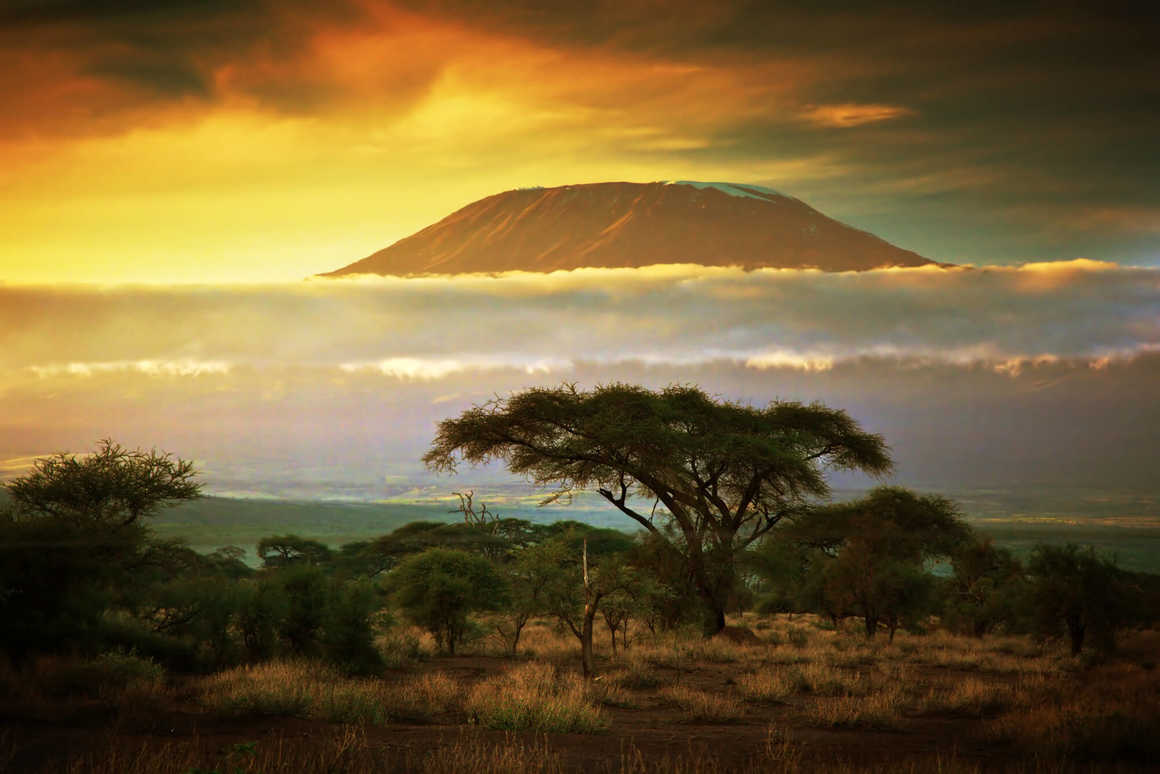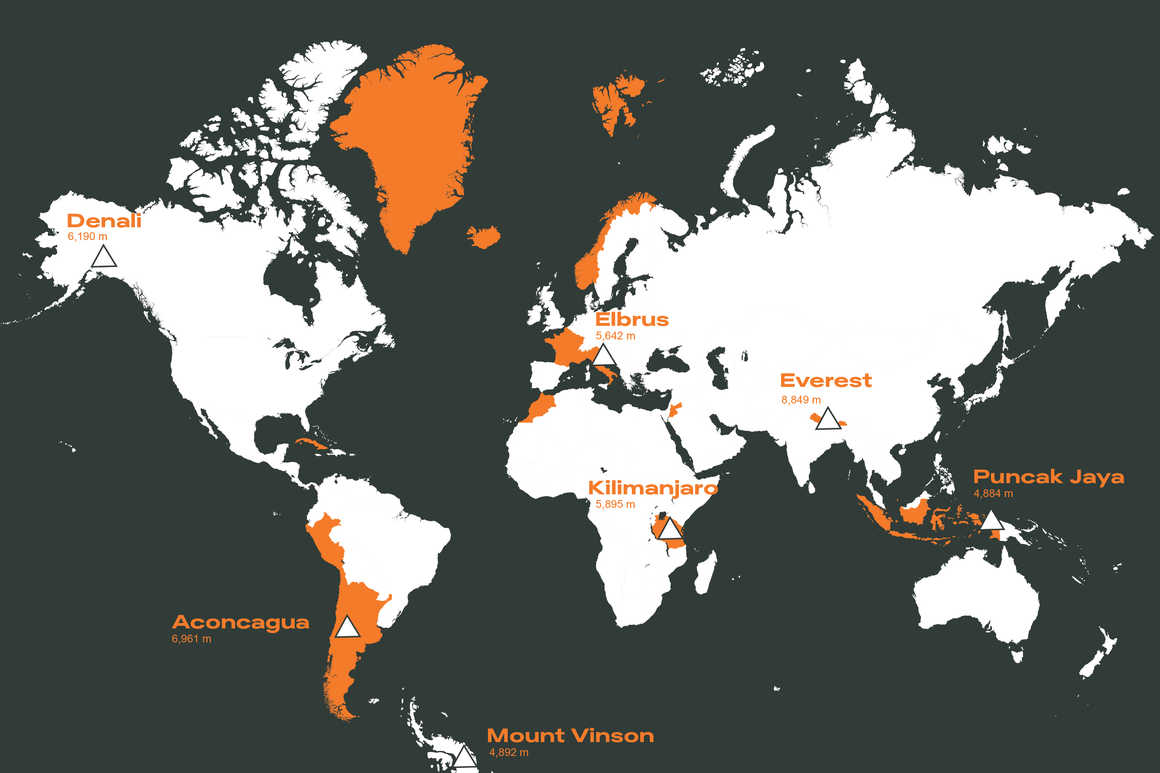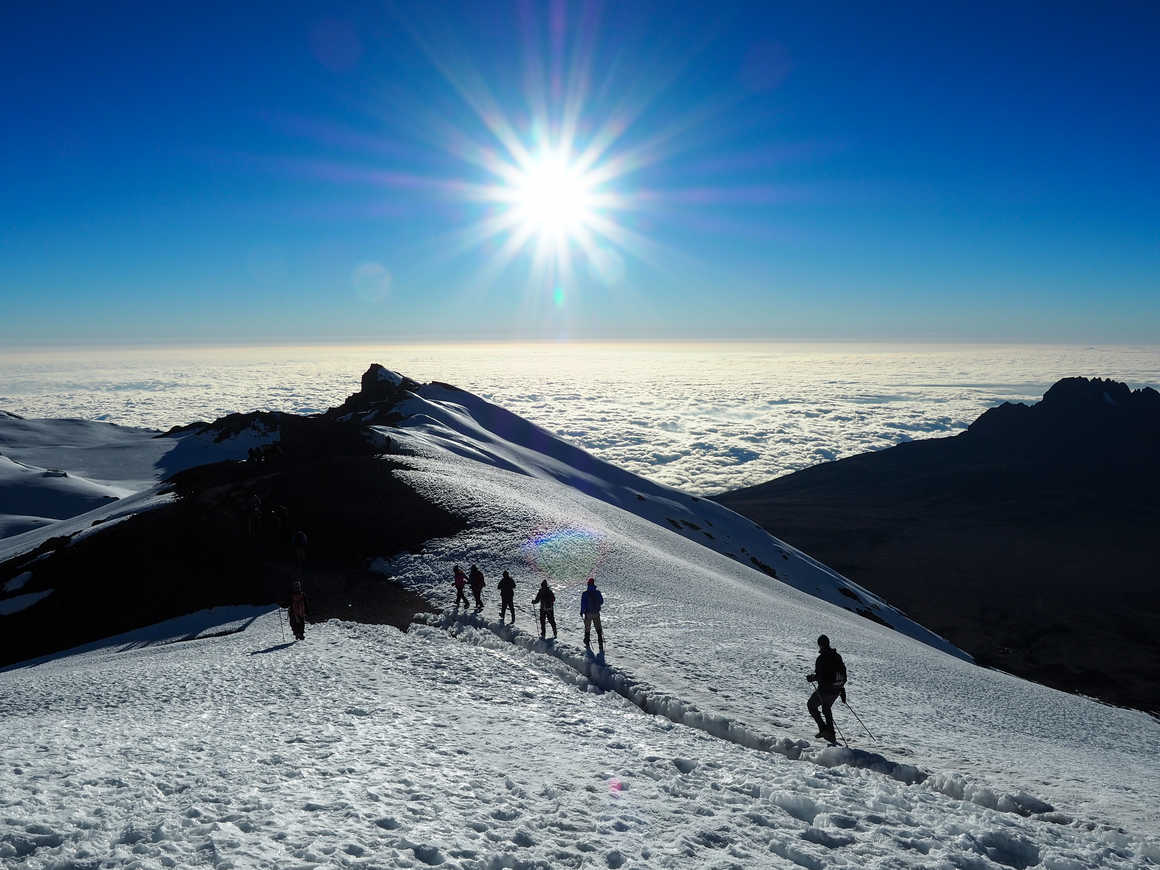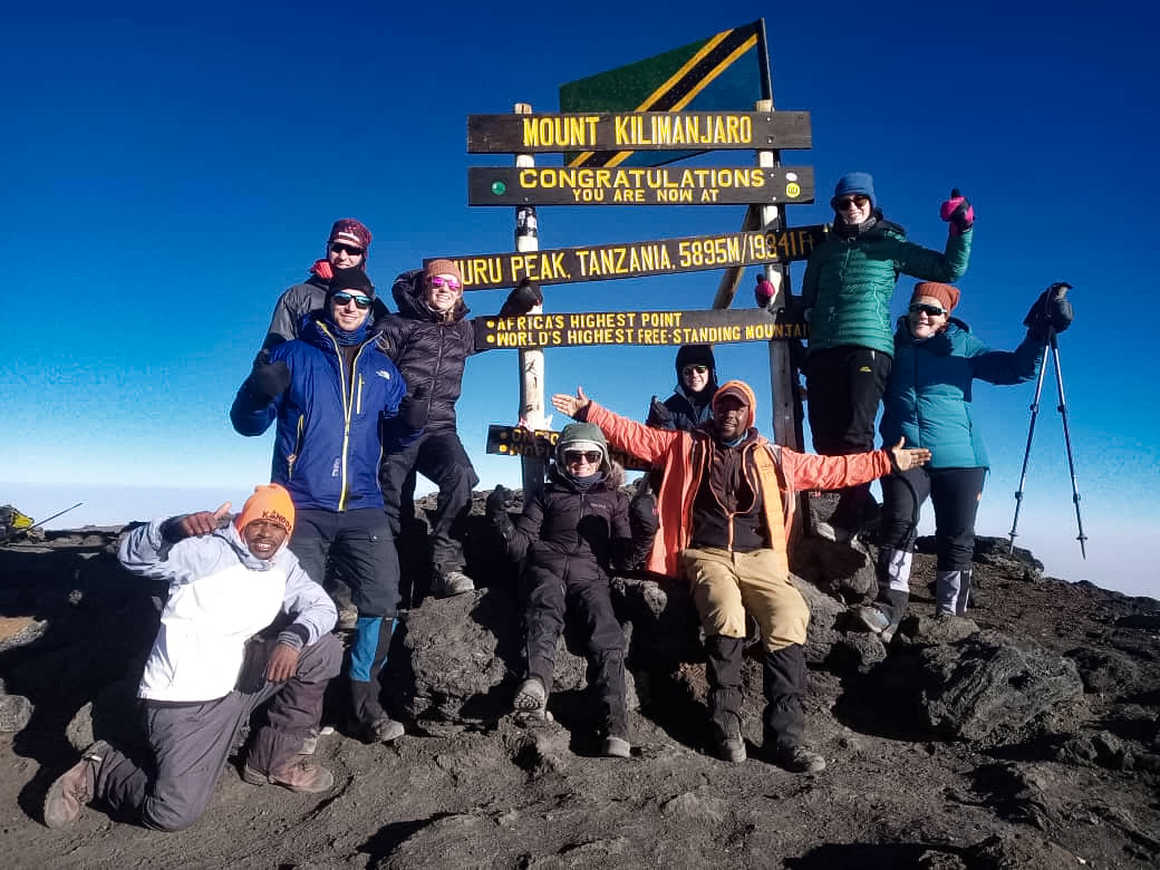Fascinating Facts and Lesser-Known Revelations About Mount Kilimanjaro
Climbing Kilimanjaro was one of the very first trekking
holidays Kandoo Adventures launched, way back when. Tanzania and Mount
Kilimanjaro hold a particular place in our hearts and every new member of the
Kandoo team gets the opportunity to conquer this spectacular mountain as part
of their staff training. For all you need to know about the mountain Kilimanjaro and
what to expect on your Kili trek, check out our blog, ‘
Beginners Guide to
Kilimanjaro’. But for all those lesser-known titbits, interesting facts and little-known
revelations, check out our list of interesting facts about Kilimanjaro below
and maybe you’ll see why we are so fond of this awesome African peak.
1. How high is Kilimanjaro?
Mount Kilimanjaro is 5,895m high and is both the highest
mountain and the highest point on the continent of Africa. The height of
Kilimanjaro has affectionately given the mountain the title of the ‘roof of
Africa’ and the views from the top of this unique freestanding volcano are
extraordinary.
2. Where did the name Kilimanjaro come from?
It is not definitively known where the name ‘Kilimanjaro’
came from but there are several theories that Kilimanjaro translates to
mountain of greatness, mountain of caravans or the mountain that defeats or is
unclimbable. The language of the Bantu people of central Africa includes
Swahili or Kiswahili and ‘Kilima’ translates to mountain, where ‘Njaro’ could mean greatness, or ‘jaro’ means caravan. Possibly the name could
come from the Kenyan Wakamba words ‘jajeu’ or ‘kyeu’ both meaning
whiteness.
The name Kilimanjaro could come from a mixture of origins
from the ethnolinguistic people of the east African region but it was generally
accepted during the German east African occupation as ‘Kilima-Ndscharo’,
drawing on the most popular Kiswahili interpretations of the region at the
time, becoming the Kilimanjaro we know today.
3. Why is Kilimanjaro unique?
Mt Kilimanjaro is unique as it is the largest single freestanding
mountain in the world and the highest volcano in Africa. This breathtaking
behemoth can be seen from hundreds of miles away and due to its equatorial
proximity, it is often possible to glimpse the snow-capped summit in all its
glory free from cloud cover unlike many other iconic peaks.
Another reason the Kilimanjaro climb is unique is that it is
one of the easiest trekking peaks in the world to trek up. The path is well
established, there are no technical sections and so long as you have a
reasonable level of fitness, positive attitude and allow plenty of time for
acclimatisation, this is one of the most accessible trekking mountains to
climb.
4. Kilimanjaro is one of the seven summits
The Seven Summits
- Mount Everest – Asia - Nepal – 8,848m
- Aconcagua – South America - Argentina – 6,961m
- Denali/Mount McKinley – North America - USA – 6,194m
- Kilimanjaro – Africa - Tanzania – 5,895m
- Elbrus – Europe – Russia - 5,642m
- Vinson – Antarctica – 4,892m
- Kosciuszko – Australia – 2,228m
5. Kilimanjaro is a stratovolcano
There are several different types of volcano, which are
formed by the differing viscosity of the lava and ash emitted during an
eruption. Stratovolcanoes, or composite volcanoes, are typically cone shaped
with steep sides and pointed profiles as the matter from these volcanoes cools
and hardens quicker forming composite layers as opposed to shield volcanoes
which have a much lower, sprawling profile due to the less viscose lava and ash
travelling further.
6. The ecology of Kilimanjaro
Climbing Kilimanjaro is one of the most enjoyable trekking
experiences you can have. Not only is Tanzania a fascinating and varied country
to explore before and after your trek, but the
Kilimanjaro National Park and the mountain itself offers an almost
unrivalled journey through five separate ecological zones, each with its own
distinct and beautiful features.
The base of the mountain begins with the dry cultivated zone
where local people have farmed the land into a green patchwork and the rich
volcanic soil is perfect for growing crops such as coffee, beans, maize and
supporting self-sufficient homesteads for farmers and their families.
Above this cultivated band of lowland farms where there is
little natural vegetation, you next come across the rainforests of Kilimanjaro
where dense, lush plant life is plentiful. This begins around 1,800m and is a
stark contrast to trekking through farmland.
Above the treeline, the next ecological zone is moorland
which begins around 2,800m where it is much drier, colder and less humid than
the rainforest. There is still foliage here, but the landscape is coloured in
dusty shades of brown and plant life is much shorter at this higher altitude.
At around 4,000m the moorlands give way to alpine desert after which you
experience the artic icy summit zone above 5,000m.
The diversity of the landscapes on Kili make your
Kilimanjaro climb a fascinating journey from start to finish. Different
routes up Kilimanjaro will vary in trekking time and sights, but each will
inevitably trek through these contrasting terrains up the beautiful slopes of
this biodiverse mountain and are one of the main draws for many travellers
looking for more than just another summit to bag.
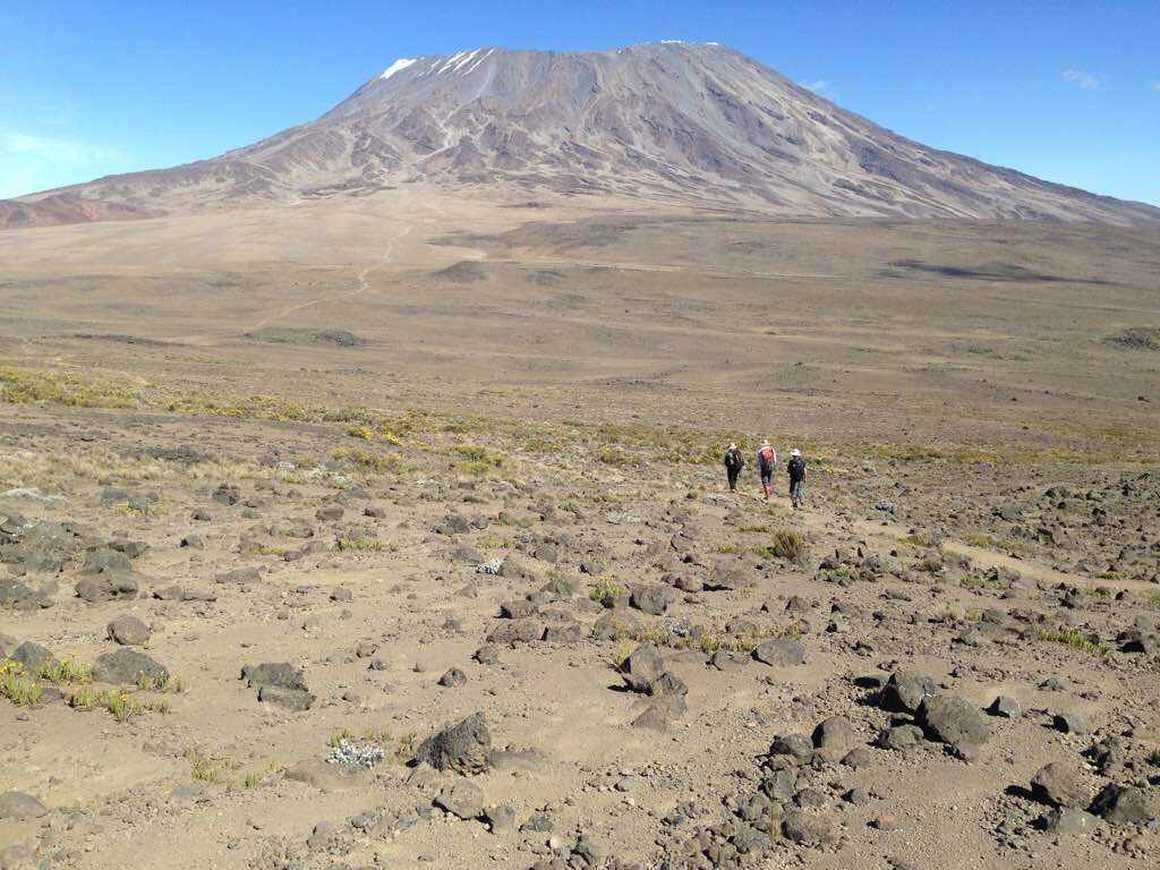
7. There is snow on Kilimanjaro
You could probably guess from the previous section regarding
the origins of the name of Kilimanjaro, that there is in fact snow on
Kilimanjaro. More than that there is actually a glacier near the summit of
Kilimanjaro called the Furtwangler Glacier. The high altitude makes the summit
region perpetually cold, but this impressive glacier is fast receding due to
increased global temperatures and it is predicted that it will have largely
melted by 2040.
8. The first ascents of Kilimanjaro
The first documented ascent of Mount Kilimanjaro was made by
a German geology professor, Hans Meyer and Ludwig Purtscheller, an Austrian mountaineer on
6th October 1889. It was Meyer’s third attempt to conquer
Kilimanjaro and its ultimate success was due to the establishment of camps at
the higher stages of the route, serviced by local porters who brought food
supplies so the trekking party didn’t have to descent to restock. They reached
the summit of the volcano Kibo, the highest point on Kilimanjaro, and were the
first to confirm that Kibo had a crater.
Sheila MacDonald was the first woman to summit Kilimanjaro on
the 31st July 1927 although she never set out to climb the mountain
when she left London for Kenya. A chance encounter on the boat over to Africa
saw her strike up conversation with an Alpine Club member who invited her to
join him and his party.
A full 18 years previously, Gertrude Benham had reached the
summit of the third highest point on Kilimanjaro, known now as the Mawenzi
crater, but as Kibo is recognised as the highest point, she was never credited
with being the first female to conquer Kilimanjaro despite her incredible
achievement.
9. The fastest ascent of Kilimanjaro
The same person holds the record for the fastest ascent of
Kilimanjaro and the fastest ascent and descent of the mountain. Karl Egloff is
a Swiss-Ecuadorian mountain guide who having guided a group of trekkers to the
summit in the preceding days, ran from the Umbwe Gate at 1,600m to the summit
in 4 hours and 56 minutes and back down again to the Mweka Gate in 6 hours and
42 minutes. It is likely that his previous trek in the days prior to his world
record attempt contributed to his ability to acclimatise to the altitude much
quicker the second time around. Egloff set this record on 13th
August 2014, beating the previous record set 4 years previously by around half
an hour.
10. Unusual Kilimanjaro world records
Did you know that the youngest person to climb Kilimanjaro
was just six years old?! Despite the fact that permits have an age-limit of 10
years, Coaltan Tanner, a young American boy summited Kilimanjaro in 2018 at six
years and one month of age. Before this, the record for the youngest person to
climb Kilimanjaro was another American boy aged 7.
In addition to these intrepid young men, Mount Kilimanjaro
has been summited by wheelchair users, amputees and even an 89 year old woman,
Anne Lorimor, who first set the record when she was 85 years old in 2005. When her
record was beaten, she broke her previous record and the new one in 2019 at the
ripe age of 89. What a woman!
11. Kilimanjaro and climate change
In 2022 the UN
published a report that estimated the last glaciers would have left Africa,
and many other World Heritage Sites, by 2050. The ice cap on Kilimanjaro has
already shrunk by an astounding 85% between 1912, when it was first surveyed,
and 2011. Not only have rising global temperatures contributed to the melting
of the glaciers on Kilimanjaro, but changing weather patterns are also causing
problems. The wet seasons used to bring plentiful rain which brought snow to
the peak and filled the rivers and tributaries on the mountain, providing
drinking water for locals and trekkers alike. The changing weather means the
rains visit for shorter periods each year, with longer dry spells in between,
which is massively affecting both wildlife and plant life on the mountain, as
well as the farms that make a living on the lower slopes of Kilimanjaro.
On the one hand, this makes the climb easier as navigating
the glaciers isn’t as treacherous but on the other hand the terrain is becoming
drier and dustier at certain times of the year and finding water is becoming
more challenging during the dry seasons. Despite the changing conditions on the
mountain, climbing Kilimanjaro is more popular than ever and Tanzania welcomes
visitors who contribute to their growing tourism economy, supporting more jobs
than ever before.
12. Kilimanjaro summit success rates
With over 50,000 trekkers climbing Kilimanjaro each year,
this is one of the most popular seven summits to bag. Success rates vary wildly
from tour operator to tour operator and can typically be anything from 35% -
85%. Kandoo Adventures have one of the highest summit success rates in the
industry with over 95% of guests successfully summiting Kilimanjaro on our
trips. The reason for this is our strict adherence to the golden rule of
managing altitude sickness by climbing high and sleeping low. Our trips, across
all routes up Kilimanjaro, factor in plenty of acclimatisation time so trekkers
can get used to the altitude. Altitude sickness is the number one reason
why
climbers fail to summit Kilimanjaro. Our experienced team of guides and porters
are able to recognise the symptoms of altitude sickness but are adept at
striving to make sure as few people are affected as possible.
13. The tallest tree in Africa is on Kilimanjaro
Kilimanjaro climbers may not know that the tallest tree in
Africa calls the Kilimanjaro mountain region home. The Entandrophragma excelsum
trees are amongst the tallest on the continent of African and the tallest tree
measured is a whopping 81.5m tall, reputedly over 600 years old, and is in a
remote region on the lower inclines of Kilimanjaro, well away from the trekking
routes.
14. Kilimanjaro is a non-technical mountain
The astounding landscapes, unique ecology and native
wildlife all make climbing Kilimanjaro a bucket list trek. The fact that the
many routes up the mountain are all non-technical appeal to trekkers of all
ages and backgrounds. With enough training and a good level of fitness, the
trek up Kilimanjaro while not easy, is achievable with the right mindset and an
adventure specialist such as Kandoo Adventures to make sure your trip runs
smoothly from start to finish. No specialist equipment is needed, beyond perhaps
some walking poles, insulative clothing and a good pair of walking boots.
15. There is plenty of wildlife to spot on Kilimanjaro
The rainforests of Kilimanjaro are home to plenty of
wildlife although sightings are rare as many of the native species stay away
from the trekking routes. The thick vegetation also conceals many of the shy
animals that call the slopes of Kilimanjaro home. Quiet trekkers might be
rewarded with glimpses of blue monkeys, bushbabies and colobus monkeys, but
genets, servals or civets which are all species of cat are incredibly hard to
spot. It is said that there are also olive baboons, leopards and bush pigs
living on Kilimanjaro too, but sightings are few and far between, even amongst
the locals.
Mount Kilimanjaro was once home to black rhino and elephants
but as trekking tourism has increased on the mountain the larger inhabitants
have moved to quieter habitats away from passing footfall.
16. The indigenous people of Kilimanjaro
The Chagga or Wachagga people have inhabited the slopes of
Kilimanjaro for centuries and were historically made up of numerous different
clans. Clans were separated by territories separated by natural divides such as
ridges, cliffs and cols and spent much of their history at war with each other.
Fighting was typically over territory and resources but these days the Chagga
people of Kilimanjaro are a much more united group.
Whilst the Chagga inhabited the southern and easter slopes
mainly, the Maasai people called the northern and western sides of Kilimanjaro
home. Despite fierce competition between the tribes, both the Maasai and the
Chagga revere Mount Kilimanjaro, and it is a source of both spiritual and
physical sustenance for these indigenous people. The Chagga still bury their
dead facing Kibo peak which they believe is the house of God.
More recently, Kilimanjaro is home to people from all over
Tanzania, Kenya and other regions of east Africa who come to work in the
burgeoning tourism industry supporting Kilimanjaro climbers.
To experience this magical mountain for yourselves, get in
touch with the travel experts at Kandoo or check out our Kilimanjaro trekking
trips to find your perfect itinerary up this iconic peak.
